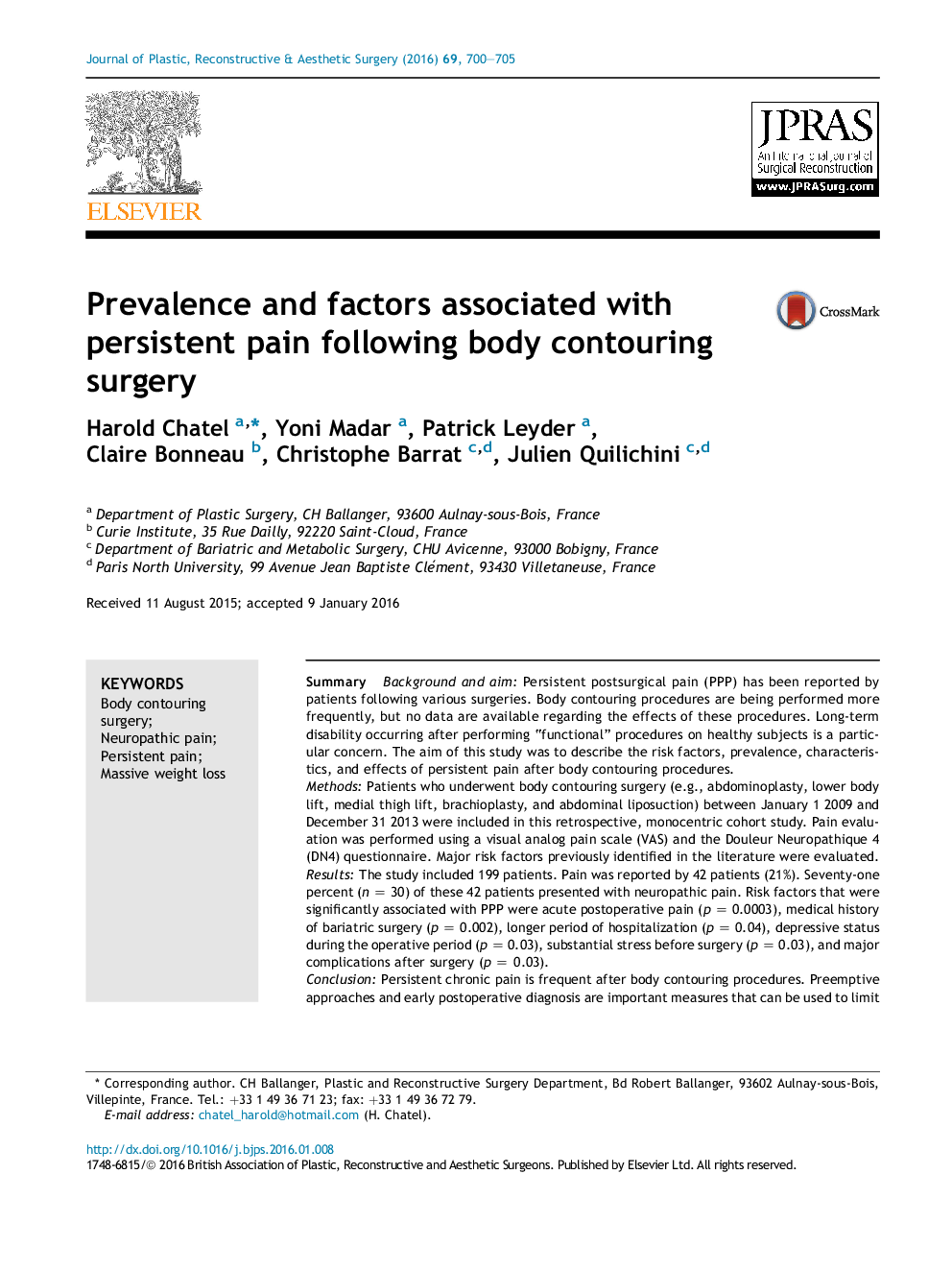| Article ID | Journal | Published Year | Pages | File Type |
|---|---|---|---|---|
| 4117097 | Journal of Plastic, Reconstructive & Aesthetic Surgery | 2016 | 6 Pages |
SummaryBackground and aimPersistent postsurgical pain (PPP) has been reported by patients following various surgeries. Body contouring procedures are being performed more frequently, but no data are available regarding the effects of these procedures. Long-term disability occurring after performing “functional” procedures on healthy subjects is a particular concern. The aim of this study was to describe the risk factors, prevalence, characteristics, and effects of persistent pain after body contouring procedures.MethodsPatients who underwent body contouring surgery (e.g., abdominoplasty, lower body lift, medial thigh lift, brachioplasty, and abdominal liposuction) between January 1 2009 and December 31 2013 were included in this retrospective, monocentric cohort study. Pain evaluation was performed using a visual analog pain scale (VAS) and the Douleur Neuropathique 4 (DN4) questionnaire. Major risk factors previously identified in the literature were evaluated.ResultsThe study included 199 patients. Pain was reported by 42 patients (21%). Seventy-one percent (n = 30) of these 42 patients presented with neuropathic pain. Risk factors that were significantly associated with PPP were acute postoperative pain (p = 0.0003), medical history of bariatric surgery (p = 0.002), longer period of hospitalization (p = 0.04), depressive status during the operative period (p = 0.03), substantial stress before surgery (p = 0.03), and major complications after surgery (p = 0.03).ConclusionPersistent chronic pain is frequent after body contouring procedures. Preemptive approaches and early postoperative diagnosis are important measures that can be used to limit the effects of this complication on the patient's quality of life.
